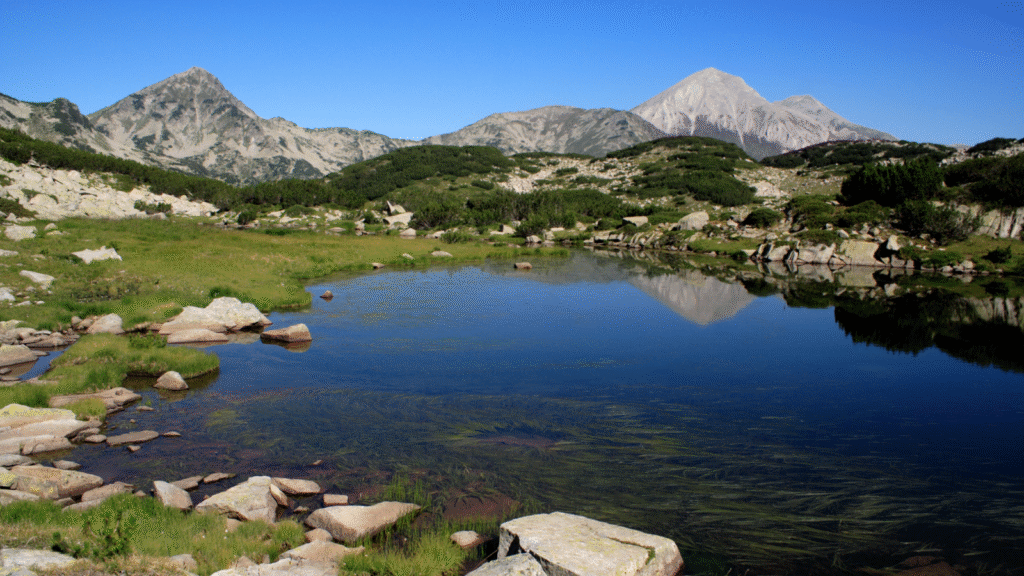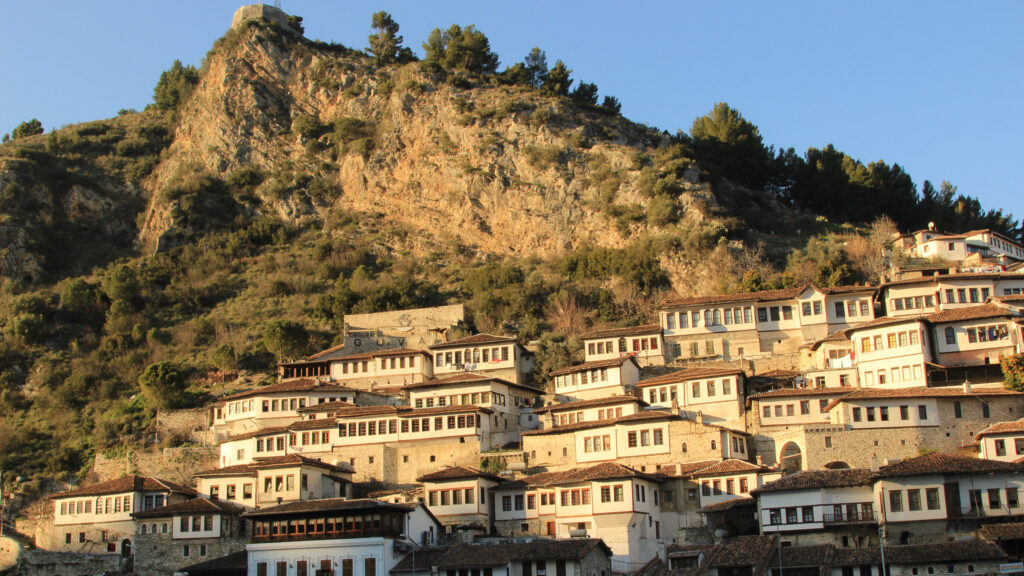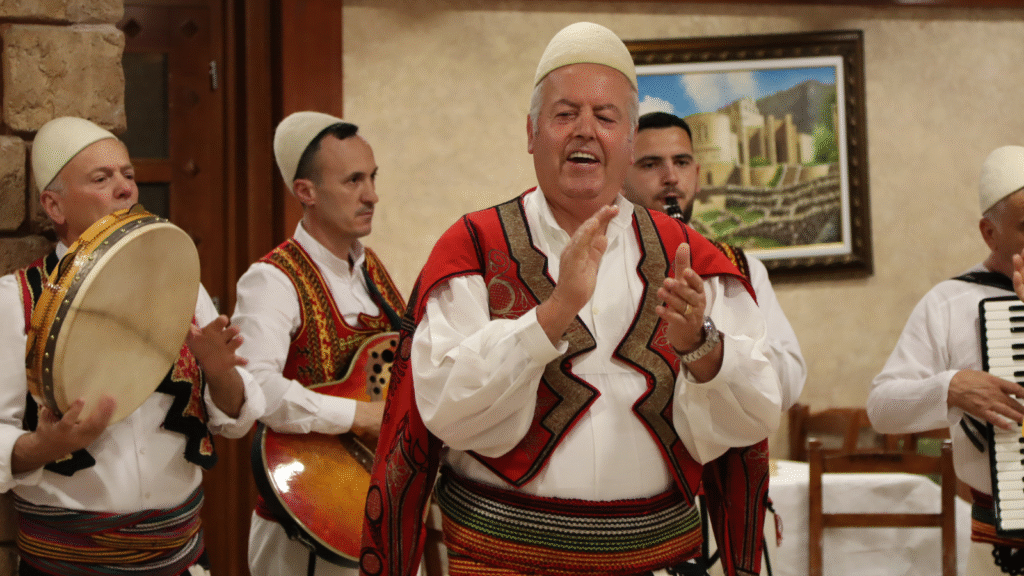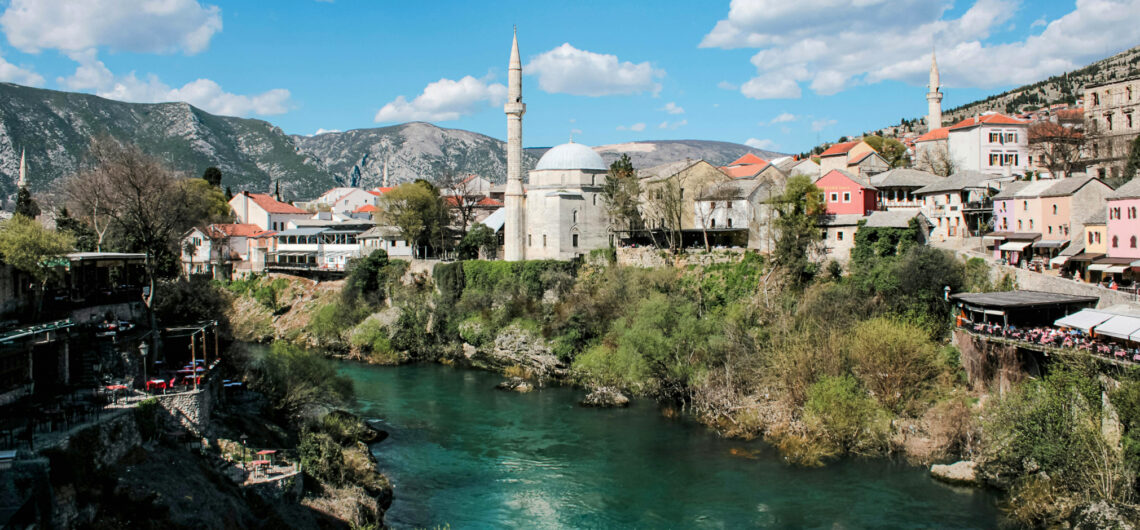Cultural heritage isn’t kept behind museum glass in the Balkans—it’s lived, breathed, eaten, sung, crafted and danced.
From Ottoman cities like Berat and Mostar to natural wonders such as Durmitor National Park, Albanian folk singing to lacemaking in Croatia, UNESCO World Heritage in the Balkans is a multi-sensory tapestry of the region’s diverse natural and cultural offerings.
In light of Lake Skadar being nominated to become a UNESCO Biosphere Reserve in October 2025, we’ve rounded up some of the region’s cultural and natural highlights—many of which you can see on our holidays in Montenegro, Albania, Serbia, Bulgaria and Croatia.
UNESCO natural heritage in the Balkans
Durmitor National Park, Montenegro

Characterized by towering limestone peaks and glacial lakes, Durmitor National Park in Montenegro is undeniably breathtaking. It’s home to one of Europe’s deepest canyons and the stunning Black Lake.
“I’ll never forget my first glimpse of Durmitor National Park, like a real-life Hobbit land, all jagged peaks in stunning formations, and wispy clouds, with wild horses roaming the grassy meadows,” says UB co-founder Emma. “The landscape’s so epic it’s hard to take it all in.”
Visit Durmitor National Park on our Montenegro family activity holiday.
Lake Skadar, Montenegro & Albania

Lake Skadar straddles the border between Montenegro and Albania and is the largest lake in Southern Europe at roughly 400 square kilometres (is actual size depends seasonal water level variations). This biodiversity hotspot is teeming with wildlife and an important nesting site for the endangered Dalmatian Pelican, which our guests love to spot during kayaking safaris on our Lake Skadar holiday, and on boat trips.
In 2025, the Montenegrin and Albanian governments both nominated Lake Skadar to become a UNESCO Biosphere Reserve, which means it will enjoy greater environmental protection and extend the so-called ‘Amazon of Europe’ deeper into Southeast Europe.
Ohrid-Prespa Region, North Macedonia & Albania

Lakes Ohrid and Prespa on the Albanian-North Macedonia border are a shared UNESCO Biosphere Reserve, so it goes without saying that they’re wildlife havens. Both are ringed by traditional fishing villages and little pebble beaches you can kayak to. You can explore their Albanian waters and shores on our South Albania activity holiday.
Pirin National Park, Bulgaria

The UNESCO-listed Pirin National Park in southwest Bulgaria is a haven for all sorts of outdoor activities, from hiking to skiing. Much like Durmitor, the park is characterised by dramatic karst limestone features such as jagged peaks, glacial lakes, waterfalls and caves. There are countless alpine trails through its coniferous forests. The highest point is Vihren mountain (2,914m above sea level).
Discover the Pirin mountains on our week-long Bulgaria hiking holiday.
Related:
- Dalmatian Pelican to wild horses: 14 animals found in the Balkans
- 10 traditional Balkan foods you have to try when you visit
- Meet Nebija Qotaj, the femalepreneur keeping traditional Albanian rugs alive
Cultural landmarks in the Balkans
Berat & Gjirokastër, Albania

Berat and Gjirokastër are two of Albania’s best-preserved and most distinctive examples of Ottoman towns, home to 14th century architecture.
In the riverside town of Berat—aka the ‘city of a thousand windows’—wander cobbled streets between its white Ottoman houses and discover attractions such as Berat Castle, the Byzantine church, the Red Mosque and a traditional bazaar.
Gjirokastër in South Albania has a similar vibe with its Ottoman bazaar, cobblestone streets and white houses. You will get the best views of the city from Gjirokastër Castle which towers over the entire town.
Mostar, Bosnia & Herzegovina

One of Bosnia & Herzegovina’s top attractions, Mostar is a melting pot of Ottoman, Austro-Hungarian and Yugoslavian architecture and a symbol of endurance and reconciliation from the 1990s conflicts.
Sprawling out across two sides of the Neretva river, its key attractions include the Koski Mehmed Pasha mosque (from the top of which you can get fabulous views of the city), a lively bazaar, Stari Most bridge, Blagaj, and various museums dedicated to its Ottoman history and the breakup of Yugoslavia.
You can visit Mostar on both of our Bosnia holidays.
Kotor, Montenegro

The Bay of Kotor is another hugely popular tourism destination in the Balkans. The fortified city of Kotor on the Adriatic coast is undeniably pretty. Its UNESCO medieval old town is home to Romanesque churches and a labyrinth of cobbled alleyways. Walking the walls is a great way to see the town and bay from various angles. Just off the coast is Our Lady of the Rocks, an islet crowned by a 17th century church.
Studenica Monastery, Serbia

The remarkably preserved 12th century Studenica Monastery in central Serbia is a feast for the eyes. Sitting amid serene rolling hills between Kraljevo and Ivanjica, it’s the largest and richest Serb Orthodox monastery in the country. There are two principal monuments on site: the Church of the Virgin and the Church of the King.
Rila Monastery, Bulgaria

A masterpiece of Orthodox art and faith, the 10th century Rila Monastery in Bulgaria’s Rila Mountains boasts intricate architectural designs and walls covered top to bottom in vibrant frescoes. It’s the largest and most famous Eastern Orthodox monastery in Bulgaria which played an important role in the spiritual and social life of medieval Bulgaria. You can visit this spectacular monastery during our Bulgaria hiking holiday.
Living heritage: UNESCO intangible heritage in the Balkans
Whether it’s a dance, a handicraft or a form of folk singing, UNESCO doesn’t just protect places — it celebrates the living culture that gives them meaning.
Albanian folk music and Zhubleta skirt

Albanian folk music is known as iso-polyphonic singing. Songs consist of two solo parts, a melody and a countermelody with a choral drone. If you’re interested, the Lëpushë summer festival is a great place to watch this.
“I’ll never forget sitting with a family at Divjakë-Karavasta, when the mother began to sing and the whole family joined in—at first discordant, then mesmerisingly beautiful,“ says Emma.
Another part of Albania’s intangible heritage is the Zhubleta skirt, a bell-shaped folk skirt traditionally worn in the highlands of north Albania, but also found in Montenegro, Kosovo and North Macedonia. It’s a hefty garment, usually made from wool, and dates back some 4,000 years.
Croatian klapa singing and lacemaking

In Croatia’s Dalmatia region, a homophonic, a cappella style of singing known as Klapa is listed as UNESCO intangible heritage. It was first recognised by music historians in the 19th century, but it’s believed to have been around much longer.
“Klapa singing is a big part of Croatian culture”, says Emma. “In our early days on Vis Island, our second home for years, a group of men stopped beneath our lit window and serenaded us with klapa. It’s such a soulful a cappella sound.”
Likewise, lacemaking is a long standing tradition in Croatia. UNESCO recognises three distinct types of lacemaking named after the regions they originate from: Pag needle-point lace, Lepoglava bobbin lace and Aloe lace from Hvar.
Montenegro & Serbia

The Kolo circle dance of Montenegro and Serbia involves dancers holding hands and moving in a circular line, performed to traditional music. Each December, UB co-founders Emma and Ben love watching this dance being performed at the Virpazar Wine and Bleak Festival.
Bosnia & Herzegovina

The traditional urban folk song of Sevdalinka is a folk song performed either a cappella or to the accompaniment of traditional music. It has a storytelling function and parents often sing these songs to their children, passing down the stories to the next generation.
Bulgaria

The Bulgarian tradition of Nestinarstvo (fire dancing) is a pagan ritual originating in the Strandzha mountain in southeast Bulgaria. Each year on 3rd June, dancers walk across hot fire embers and enter a trance in prayer to the Sun God, who they ask to deliver health, prosperity and fertility in the new year. Many tourism establishments have commercialised the dance now, so it’s common to see, but few perform it truly authentically like in the villages of Strandzha.
Fancy more Balkan travel inspiration? Sign up to our free monthly newsletter for more stories, offers and travel tips, plus 5% off all our tours.


Comments